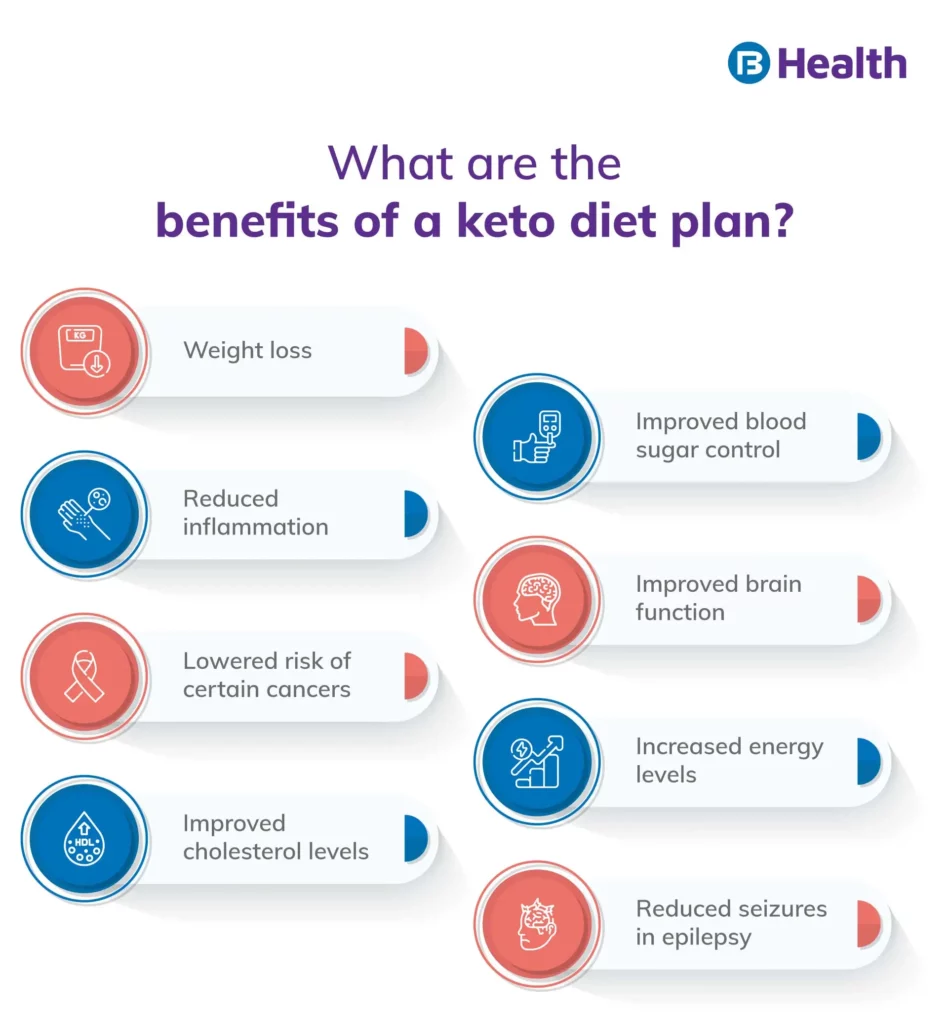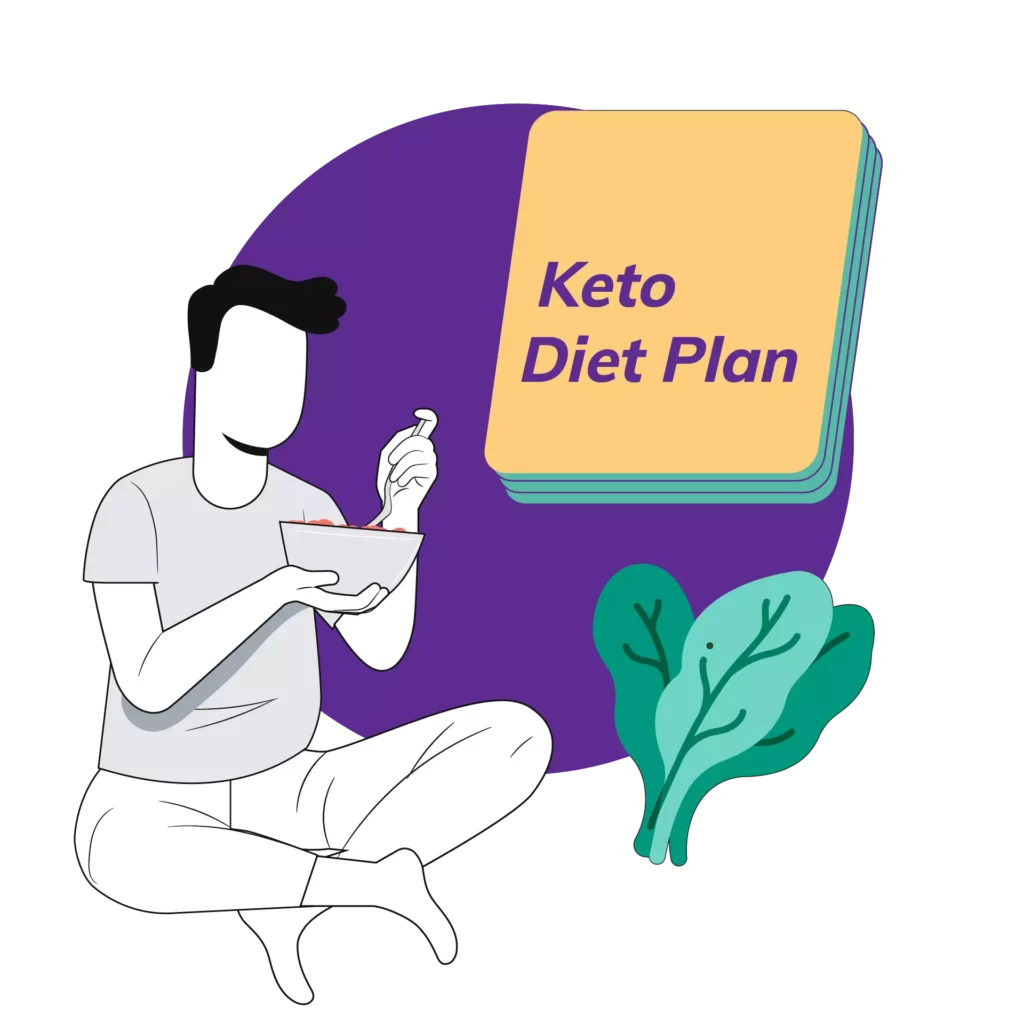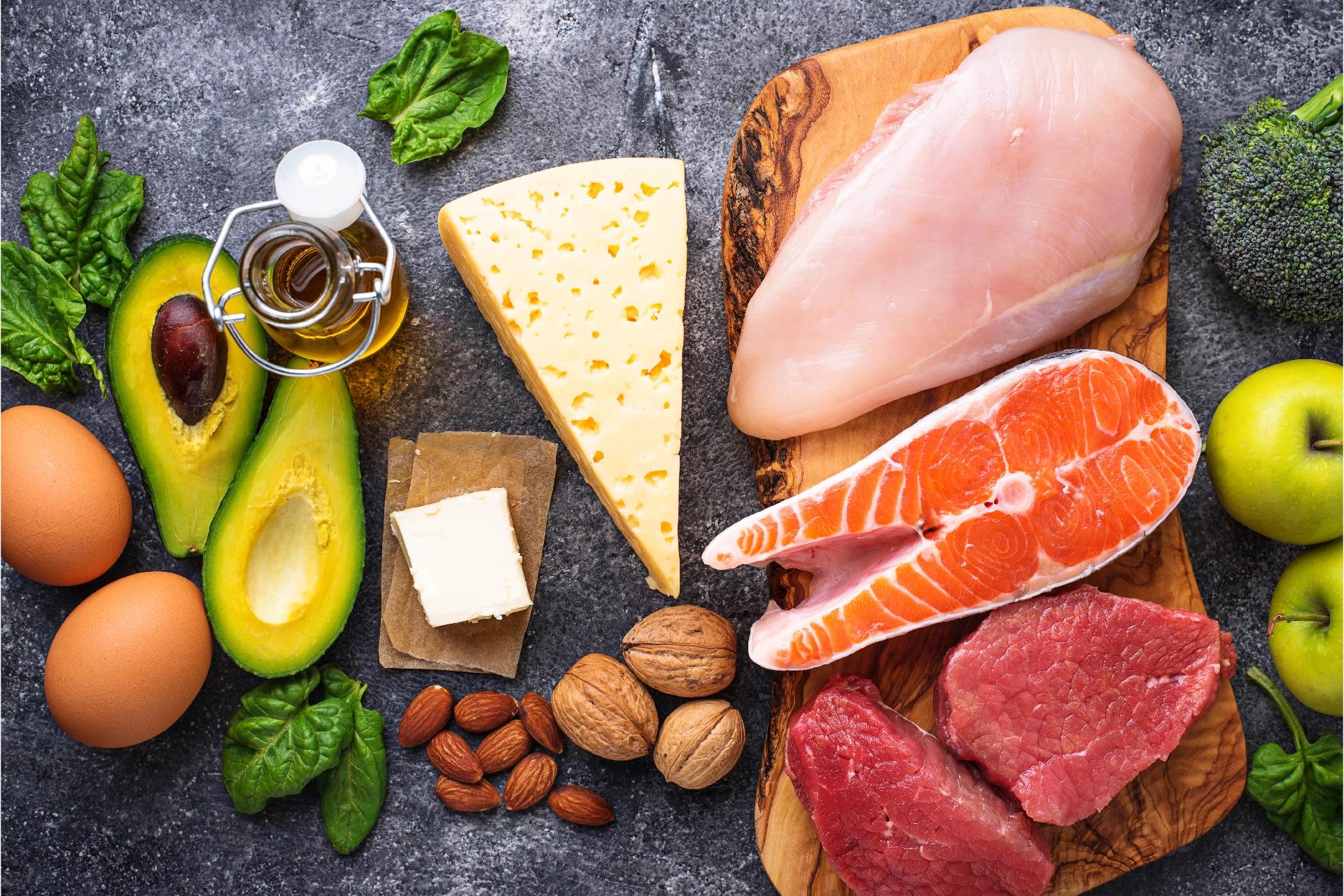Nutrition | 7 min read
Keto Diet Plan For Vegetarian: Health Benefits And More
Medically reviewed by
- Table of Content
Synopsis
The keto diet has been making waves in the health and wellness world for its benefits, from weight loss to improved blood sugar control. This works by burning fat first instead of carbohydrates. While the ketogenic diet has potential health benefits, it's important to follow a proper meal plan and speak with a dietitian beforehand, as it may only be appropriate for some.
Key Takeaways
- The keto diet plan is a high-fat diet that shifts the body into a state of ketosis to burn fat
- The keto diet plan emphasises foods that are high in healthy fats and protein while avoiding high-carbohydrate foods
- Following a ketogenic diet can be hard and may lead to nutritional deficiencies if not correctly followed
The Keto diet plan is a low-carbohydrate, high-fat diet that has gained immense popularity recently for its effective health benefits. Following a keto diet aims to shift the body into a ketosis state, where the body begins to use fat as its primary energy source instead of carbohydrates. This is achieved by reducing carbohydrate intake drastically and increasing fat and protein intake. In this guide, we'll dive deep into the ketogenic diet world and explore everything you need to know to get started.
Keto Diet Plan for Beginners
If you're new to the ketogenic diet, it's important to start slow and gradually reduce your carbohydrate intake while increasing your healthy fat and protein intake. When following a keto diet plan, carbohydrates are typically limited to 20-50 grams daily. In addition, high-carb foods such as bread, pasta, and sugary snacks are off-limits. Instead, the diet is all about foods high in healthy fats, like nuts, avocados, and olive oil. Protein sources like meat, poultry, and fish are also important to the diet, as they help keep you full and satisfied.
Here is an example of a keto diet plan for beginners:Breakfast
- Two scrambled eggs cooked in coconut oil
- Two slices of bacon
- 1/2 avocado
Lunch
- Mixed greens salad with cucumber, cherry tomatoes, and grilled chicken breast
- Dressing made with olive oil and apple cider vinegar
Snack
- Handful of almonds
- One string cheese
Dinner
- Baked salmon with lemon and butter
- Steamed broccoli with garlic and olive oil
Dessert
- 1/2 cup of unsweetened Greek yoghurt with a few raspberries and a sprinkle of chopped nuts

Foods to Eat on a Ketogenic Diet
Here are some foods that are typically included in a keto diet plan:- Healthy fats: Olive oil, coconut oil, avocado oil, butter, ghee, and animal fats
- Low-carbohydrate vegetables: Spinach, kale, broccoli, cauliflower, zucchini, cucumber, and asparagus
- Protein: Meat, poultry, fish, and eggs
- Nuts and seeds: Almonds, walnuts, macadamia nuts, chia seeds, and flaxseeds
- Dairy products: Cheese, heavy cream, and unsweetened yoghurt
- Berries: Strawberries, raspberries, blackberries, and blueberries
- Herbs and spices: Basil, oregano, rosemary, thyme, and turmeric
- Beverages: Water, unsweetened coffee and tea, and bone broth
Foods to Avoid on a Ketogenic Diet
Avoiding high-carb foods is essential when you are on a keto diet plan. Here are some foods that you should not eat or should limit:
- Sugary foods: This includes all forms of sugar, such as candy, desserts, sweetened beverages, and even some fruits
- Grains and starches: Bread, pasta, rice, and other high-carb grains
- High-carb fruits: Fruits such as bananas, grapes, pineapples, and mangos are high in carbohydrates and should be limited
- Legumes: This includes beans, peas, lentils, and chickpeas, which are high in carbs
- Processed foods: Processed foods, including packaged snacks, chips, and fast food, are often high in carbs and should be avoided
- High-carb vegetables: Some vegetables, such as potatoes, sweet potatoes, and corn, are high in carbs and should be limited
- Sugary sauces and condiments: Sauces and condiments like ketchup, BBQ sauce, and honey mustard are often high in sugar and should be avoided
Example of Non-vegetarian Keto Diet Plan
Breakfast
- Scrambled eggs with cheese and avocado
- Bulletproof coffee made with coconut oil and butter or ghee
Lunch
- Grilled chicken breast with roasted cauliflower and broccoli
- Caesar salad made with romaine lettuce, parmesan cheese, and a dressing made with olive oil and anchovy paste
Snack
- Chicken breast with vegetables
- Hard-boiled eggs
Dinner
- Grilled salmon with roasted asparagus and a side of mashed cauliflower
- Steak with garlic butter and a side salad with a dressing made with olive oil and apple cider vinegar
Dessert
- Berries with whipped cream made with heavy cream
It's important to note that the non-vegetarian keto diet meal plan can be high in saturated fats and cholesterol, which leads to an increased risk of heart disease. That’s why you should choose lean protein sources and healthy fats such as nuts, olive oil and avocado.
Example of a Vegetarian Keto Diet Plan
Breakfast
- Tofu scramble made with tofu, spinach, and avocado
- Bulletproof coffee made with coconut oil and butter or ghee
Lunch
- Mixed greens salad with avocado, cucumber, pumpkin seeds, and olive oil and vinegar dressing
- Cauliflower rice stir-fry with mixed vegetables and coconut oil
Snack
- A handful of macadamia nuts
- Chia seed pudding made with coconut milk
Dinner
- Grilled Portobello mushrooms stuffed with cheese, spinach, and tomato
- Creamy coconut curry with tofu and low-carb vegetables like broccoli, cauliflower, and zucchini
Dessert
- Chocolate avocado mousse made with avocado, cocoa powder, and coconut cream
The keto diet plan vegetarian can be challenging to follow as it can be difficult to get enough protein and healthy fats without relying on animal-based sources. Getting a dietician consultation before starting a keto diet plan is essential to ensure you meet all your nutritional needs.
Benefits of a Keto Diet Plan
Following a keto diet plan can benefit you immensely. Some of them have been discussed below:
- Weight loss: Following a keto diet plan for weight loss can be an effective way to lose a few extra pounds, as it promotes fat loss while preserving muscle mass [1]
- Improved blood sugar control: A proper keto diet plan can help regulate blood sugar levels, making it beneficial for people with diabetes or pre-diabetes [2]
- Reduced inflammation: One of the keto diet benefits is that it may reduce inflammation in the body, which is a risk factor for several chronic diseases [3]
- Improved brain function: The ketogenic diet has been shown to improve cognitive function and may be beneficial for people with neurological disorders such as epilepsy [4]
- Lowered risk of certain cancers: Some studies suggest that the keto diet may help reduce the risk of certain types of cancer, including brain and breast cancer [5]
- Increased energy levels: Following a keto diet plan can help increase energy levels by providing the body with a more stable source of fuel in the form of ketones [6]
- Improved cholesterol levels: The keto diet may help improve cholesterol levels, thus reducing the risk of heart disease [7]
- Reduced seizures in epilepsy: The ketogenic diet is effective in reducing seizures in people who have epilepsy and have not responded to medication [8]

What side effects you may experience after being on a keto diet plan?
Some common side effects of the keto diet plan include
- Keto flu: Many people experience flu-like symptoms when they first start the keto diet. These symptoms can include fatigue, headaches, nausea, and dizziness
- Digestive issues: The low fibre content of the keto diet can cause a few digestive issues, such as diarrhoea, constipation, and bloating
- Increased hunger: While the keto diet can help you feel full and satisfied, some people may experience increased hunger due to the low carbohydrate content
- Bad breath: A common side effect of the keto diet plan is bad breath, also known as "keto breath." The production of ketones in the body causes this
- Difficulty sleeping: Some people may have trouble sleeping while on the keto diet plan due to the changes in their metabolism
- Dehydration: The keto diet can cause dehydration due to the low carbohydrate intake. Remember to drink plenty of water and stay hydrated while on the keto diet plan
- Nutrient deficiencies: The ketogenic diet can be low in certain nutrients like vitamins and minerals. It's important to ensure that you're getting enough of these nutrients through a well-balanced diet or supplements
Incorporating a keto diet plan into your daily lifestyle requires consistency and patience. It may take time for your body and metabolism to adjust to the new way of eating, but with regularity and dedication, you can reap the benefits of the ketogenic diet. However, speaking with a healthcare professional before starting the diet is vital to ensure that it's safe and appropriate for you. With Bajaj Finserv Health, you can book an online appointment with a doctor from the comfort of your home and find the best keto meal plan for you.
- References
- https://www.hsph.harvard.edu/nutritionsource/healthy-weight/diet-reviews/ketogenic-diet/
- https://www.ncbi.nlm.nih.gov/pmc/articles/PMC6566854/
- https://www.ncbi.nlm.nih.gov/pmc/articles/PMC8322232/
- https://www.ncbi.nlm.nih.gov/pmc/articles/PMC2898565/
- https://www.ncbi.nlm.nih.gov/pmc/articles/PMC6375425/
- https://www.ncbi.nlm.nih.gov/books/NBK499830/
- https://www.ncbi.nlm.nih.gov/pmc/articles/PMC7449640/
- https://www.ncbi.nlm.nih.gov/pmc/articles/PMC6361831/
- Disclaimer
Please note that this article is solely meant for informational purposes and Bajaj Finserv Health Limited (“BFHL”) does not shoulder any responsibility of the views/advice/information expressed/given by the writer/reviewer/originator. This article should not be considered as a substitute for any medical advice, diagnosis or treatment. Always consult with your trusted physician/qualified healthcare professional to evaluate your medical condition. The above article has been reviewed by a qualified doctor and BFHL is not responsible for any damages for any information or services provided by any third party.



